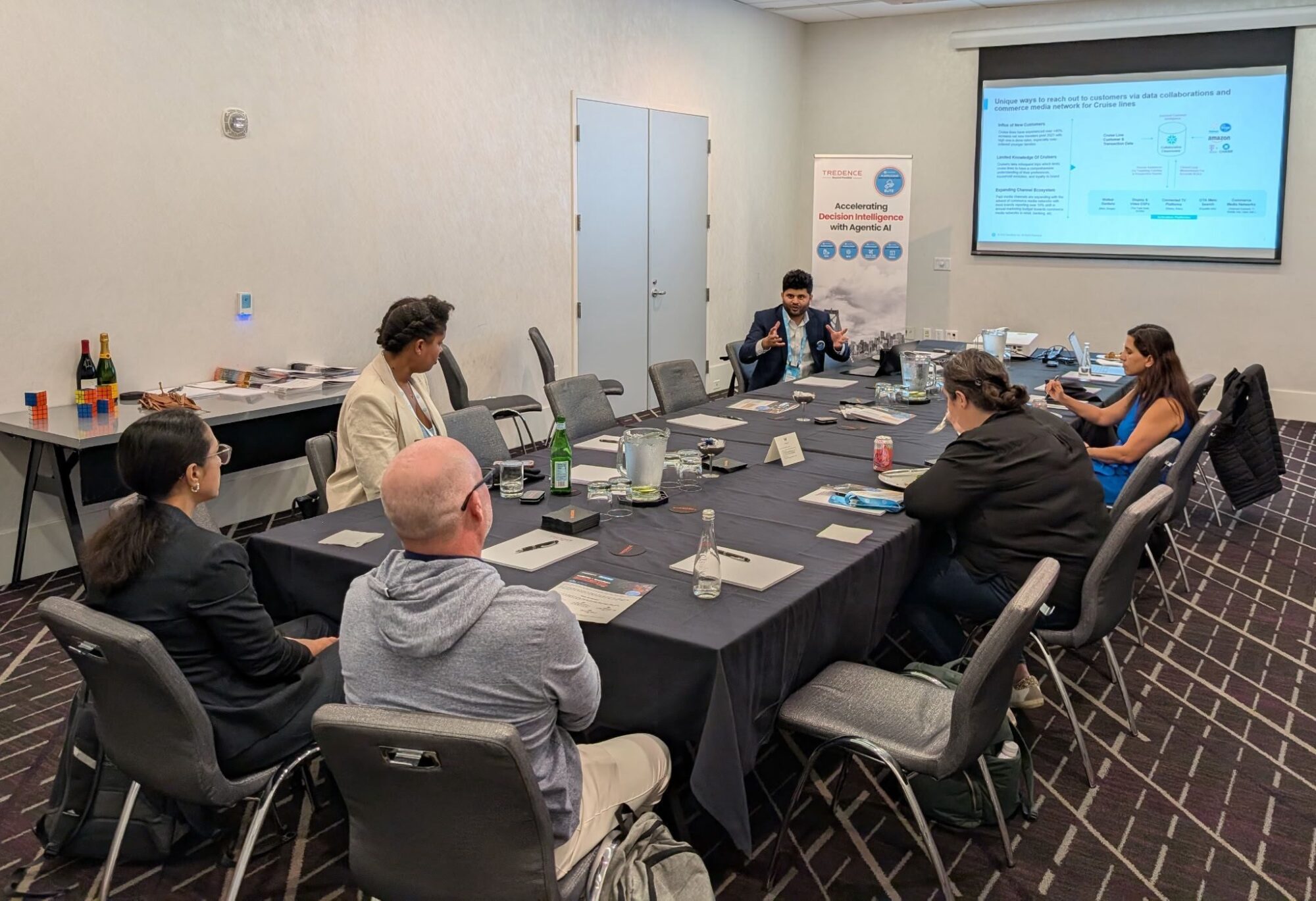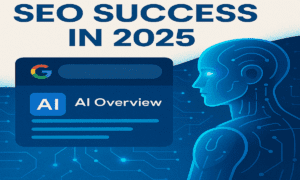Praveen Koushik (head of table) leading a closed-door workshop on operational AI systems at an enterprise strategy offsite.
In today’s fast‑paced digital landscape, customer experience (CX) transformation is no longer optional—it’s the cornerstone of competitive advantage. Traditional Voice of Customer (VoC) programs, reliant on quarterly surveys and lagging metrics like Net Promoter Score (NPS), often fail to capture the nuanced, real‑time dynamics of customer journeys. As Praveen Koushik Satyanarayana, Director of Customer Experience Management at Tredence, notes in his CustomerThink article, “Over the last few years, the Voice of Customer (VoC) has become essential to customer experience (CX)… yet only 15 % were satisfied with the result, and a meager 6 % were confident that this enabled both strategic and tactical decision‑making.”
Praveen argues that the gap stems from surveys’ reactive nature, limited feedback, and inability to predict behaviors or quantify business impact. He advocates a paradigm shift toward predictive signals—observed, real‑time feedback from transactional, behavioral, and operational data—to fuel proactive, hyper-personalized experiences that drive loyalty, retention, and revenue.
Building a Signal‑Driven CX Engine
At Tredence, Praveen has institutionalized signal‑driven CX frameworks that convert fragmented data into actionable intelligence. His thought leadership—spanning CustomerThink, CMSWire, Solutions Review, and Tredence’s own blog—shows how combining structured telemetry (e.g., clickstream, PoS data) with unstructured feedback (e.g., call transcripts, product reviews) anticipates customer frictions, decodes sentiment, and orchestrates real‑time interventions. “Signals are observed feedback from following a customer’s journey through an array of captured data elements across transactional, behavioral, and operational systems,” he explains, underscoring their superiority over lagging surveys.
Key to this engine is streaming anomaly detection. In his CMSWire piece, Praveen describes how agentic AI “monitors KPIs and alerts teams to underperformance or dips in key metrics,” enabling a proactive response that prevents performance losses. CMSWire.com Built on platforms such as Databricks, this low‑latency monitoring can, for example, dynamically route a churn‑risk caller to a retention specialist the moment negative sentiment spikes.
Institutional best practices—mandatory data governance, common customer identifiers, and cross‑functional alignment—ensure signals remain clean, contextual, and linked to business outcomes. A real‑world curb‑side‑pickup case revealed that complaints about “late” orders traced back to early customer arrivals; push notifications advising realistic pickup times cut complaints by 12 percentage points and lifted NPS by four points.
Patented NLP & Sentiment Algorithms for Deeper Insight
Central to Praveen’s framework are Tredence’s patented NLP pipelines. These algorithms process unstructured data—including voice, chat, and social text—to extract intent, emotion, and topic vectors at scale. In another CMSWire interview he cautions, “Just knowing sentiment alone isn’t enough—it’s also essential to consider customer sentiment throughout their journey to identify areas of frustration or dissatisfaction… Combining sentiment analysis with VoC scores and operational data can provide a more complete picture of customer sentiment.”
By merging sentiment with anomaly detection, signals can be quantified in hard dollars: late deliveries linked to revenue leakage, abrasive call‑center tone tied to churn, or frustration on a checkout page mapped to basket‑abandonment loss—evidence that persuades executives to act.
From “Next Best X” to Next Best Experience (NBX)
Praveen’s NBX framework discards outdated “next best product/offer/action” silos for a holistic, journey‑centric model. “It’s time to move on from the ‘next best trilogy’ forebears to the next best experience (NBX),” he writes, outlining a loop that detects signals, experiments rapidly, and recommends the ideal interaction in real time. Tredence NBX aligns cross‑functional teams on a shared goal: make every touchpoint better than the last by continuously learning from live signals and micro‑experiments.
Proof Points Across Industries
| Industry | Use Case | Outcome |
| Grocery | NLP‑powered voice & text signal monitoring for curb‑side pickup | −12 pp complaints QoQ, +4 pt NPS |
| Telecom | Multimodal churn scoring (call tone + app drop‑offs) with anomaly detection | 9 % churn reduction in pilot region |
| Global Retailer | Unified insights platform on GCP, 300 + CX KPIs with NLP‑enhanced models | 3× faster time‑to‑insight, ML‑driven personalization |
| E‑Commerce | GenAI recommendations blending behavioral & sentiment signals | +15 % conversion uplift |
Tredence’s results were validated when Forrester Wave™ 2025 named the firm a Leader, citing its “factory‑and‑foundry model that accelerates last‑mile adoption.” Tredence’s Additional commentary in Solutions Review credits Praveen’s NBX approach for enabling GenAI‑powered personalization at scale.
Looking Ahead: Agentic AI & Omnichannel Orchestration
Praveen foresees agentic AI replacing static dashboards with autonomous systems that unify CX, analytics, and marketing. Agentic AI “marks a pivotal leap… delivering proactive insights and automating many once‑manual actions,” he argues, predicting a surge in omnichannel personalization as first‑party data and virtual assistants converge.
“Customer experience is the single most important competitive advantage for any organization today.” — Praveen Koushik Satyanarayana
By harnessing predictive signals, patented NLP, anomaly detection, and the NBX framework, Praveen’s work at Tredence shows how to convert data exhaust into real‑time, customer‑centric action—turning reactive VoC programs into foresight‑driven engines of growth.



























